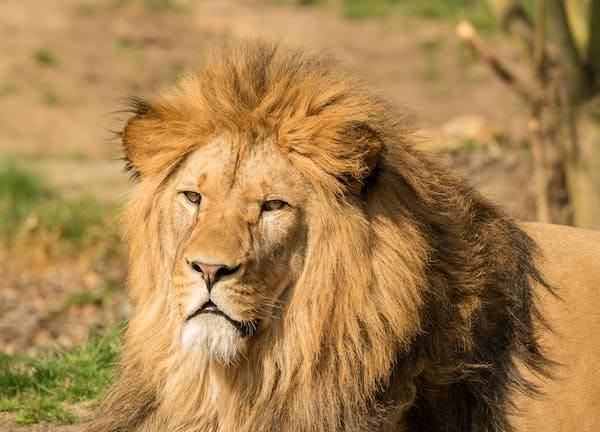Barbary Lion
The Barbary lion, also known as the North African lion, once roamed the vast landscapes of the Maghreb region, captivating the imagination with its majestic presence. Our article, we delve into the intriguing aspects of the Barbary Lion, exploring its size, current status, and the looming question of its extinction.
Additionally, we seek to answer the often-asked query: Is a Barbary lion truly bigger than its contemporary counterparts?
Renowned for its majestic mane and once inhabiting the mountainous regions of North Africa, the Barbary lion has become a subject of fascination and concern due to its extinction in the wild.
This article delves into the characteristics, size, extinction status, and the enduring mystery surrounding the Barbary lion, addressing questions such as whether it is larger than the common lion and if any hope remains for its survival.
The Magnificence of the Barbary Lion
The Barbary lion (Panthera Leo Leo) has long been celebrated for its grandeur and regal bearing. Historically, these magnificent creatures were distributed across the Atlas Mountains of North Africa, from Morocco to Egypt. Their distinctive features included a robust build, a thick mane, and a coat that ranged from a light sandy color to a darker, more golden hue.
Barbary Lion Size: Myth or Reality?
One of the prevailing questions surrounding the Barbary lion is whether it is indeed larger than other lion subspecies. Various historical accounts and explorers’ tales have contributed to the myth of the Barbary lion being exceptionally large. There is, however, little scientific proof to back up this assertion.
In the absence of concrete data comparing the size of the Barbary lion to other lions, it remains challenging to definitively assert that they were consistently larger. Size variations within lion populations are influenced by factors such as geography, prey availability, and environmental conditions.
Consequently, determining the Barbary lion’s size relative to other lions remains a complex and speculative endeavor.
Comparative studies between the Barbary lion and other lion subspecies reveal that their sizes were generally comparable. The variations in size may have been influenced by environmental factors, prey availability, and genetic diversity within the population.
It is essential to approach the question of size with a nuanced perspective, considering the complexities of ecological dynamics.
The Current Status of the Barbary Lion
The decline of the Barbary lion population began centuries ago, primarily due to habitat loss, human-wildlife conflict, and indiscriminate hunting. By the early 20th century, the Barbary lion had been eradicated from much of its natural range. Today, the Barbary lion is considered extinct in the wild, with no known populations remaining in its native habitat.

Efforts to Preserve the Barbary Lion
Despite their extinction in the wild, there have been ongoing efforts to preserve the Barbary lion through captive breeding programs. Some lions held in captivity are believed to have Barbary lion ancestry, and initiatives aim to reintroduce the genetic traits of this majestic subspecies.
The question of whether these captive populations truly represent the authentic Barbary lion, or if the essence of this unique subspecies has been diluted over generations, remains a subject of debate among conservationists.
The challenges of preserving genetic diversity and maintaining the distinct characteristics of the Barbary lion in captivity are significant hurdles faced by those striving to resurrect this noble creature.
The Looming Threat of Extinction
Despite the dedicated efforts of conservationists, the Barbary lion continues to teeter on the brink of total extinction. The encroachment of human activities, habitat degradation, and the relentless expansion of urban areas further diminish the likelihood of re-establishing viable wild populations.
Is a Barbary Lion Bigger Than a Lion?
Returning to the perennial question of size, the Barbary lion’s potential for being larger than other lion subspecies remains speculative. Without concrete scientific data to support such claims, it is crucial to approach this question with a degree of skepticism.
Lions, in general, exhibit size variations influenced by environmental factors, and the Barbary lion is no exception.
What Did Barbary Lions Eat?
The diet of the Barbary lion mirrored that of other lion Subspecies, consisting primarily of ungulates such as deer, zebras, and wildebeests. Lions are opportunistic predators, adapting their prey preferences based on the availability of local fauna.
In the vast and varied landscapes of North Africa, the Barbary lion would have encountered diverse prey species, contributing to its survival in the region for thousands of years.
The Barbary Lion’s Unique Characteristics
The Barbary lion (Panthera leo leo) was distinct in appearance, with a robust build and a thicker, fuller mane compared to other lion subspecies. Its habitat spanned the Atlas Mountains of North Africa, including regions in Morocco, Algeria, Tunisia, and Libya. Historical records and artistic depictions suggest that the Barbary lion was revered for its majestic presence, often symbolizing strength and royalty.
In short
The enigma of the Barbary lion persists, captivating our imagination with its tales of grandeur and regality. As we navigate the intricate web of historical accounts, scientific evidence, and conservation efforts, the Barbary lion stands as a symbol of both the majesty and vulnerability of Earth’s magnificent creatures.
In the face of their extinction, the Barbary lion prompts us to reflect on the broader issues of habitat loss, human-wildlife conflict, and the urgent need for conservation measures.
While the Barbary lion may never again roam the landscapes of North Africa as it once did, the lessons learned from its story can guide us in safeguarding the remaining diversity of life on our planet.
Whether or not the Barbary lion roams the wild or lingers in the genetic makeup of captive individuals, the lessons learned from its decline are invaluable in shaping a future where apex predators thrive in harmony with their ecosystems. Conservationists, scientists, and enthusiasts alike must unite to protect the remaining lion populations and ensure that no other subspecies faces the same fate as the Barbary lion.





Favourite
very good job